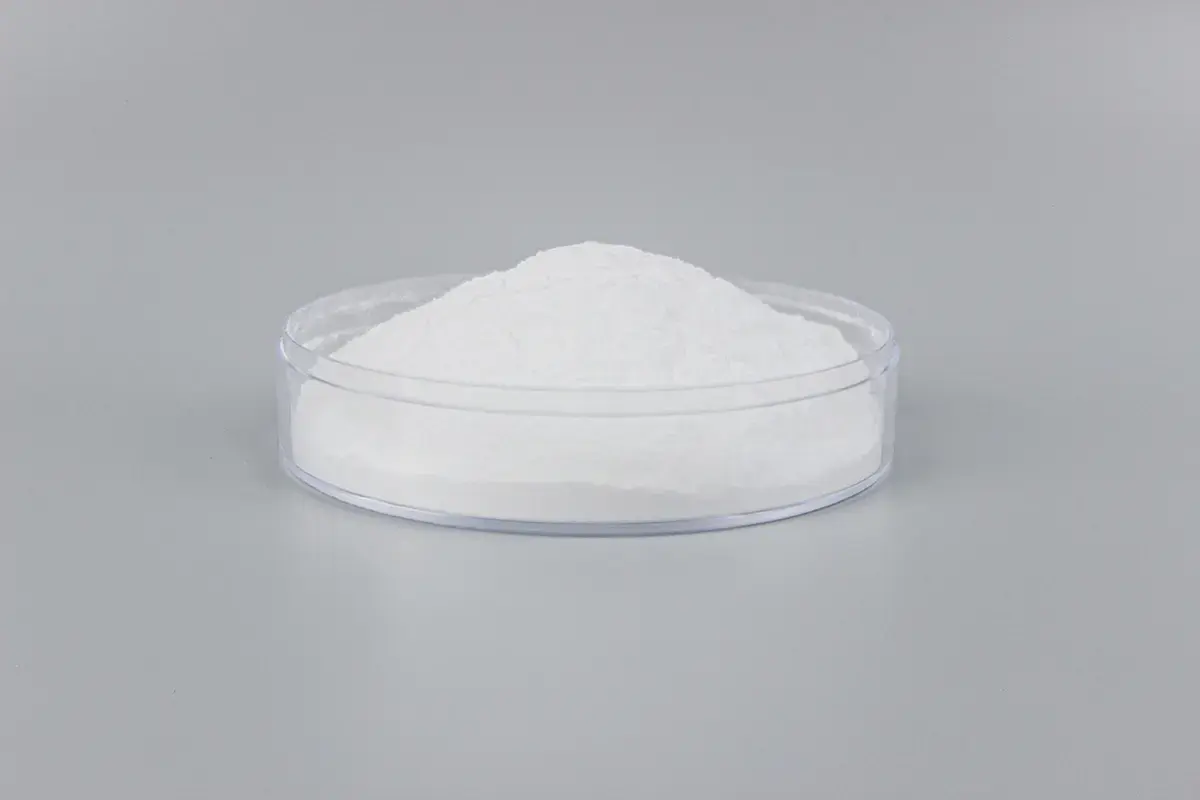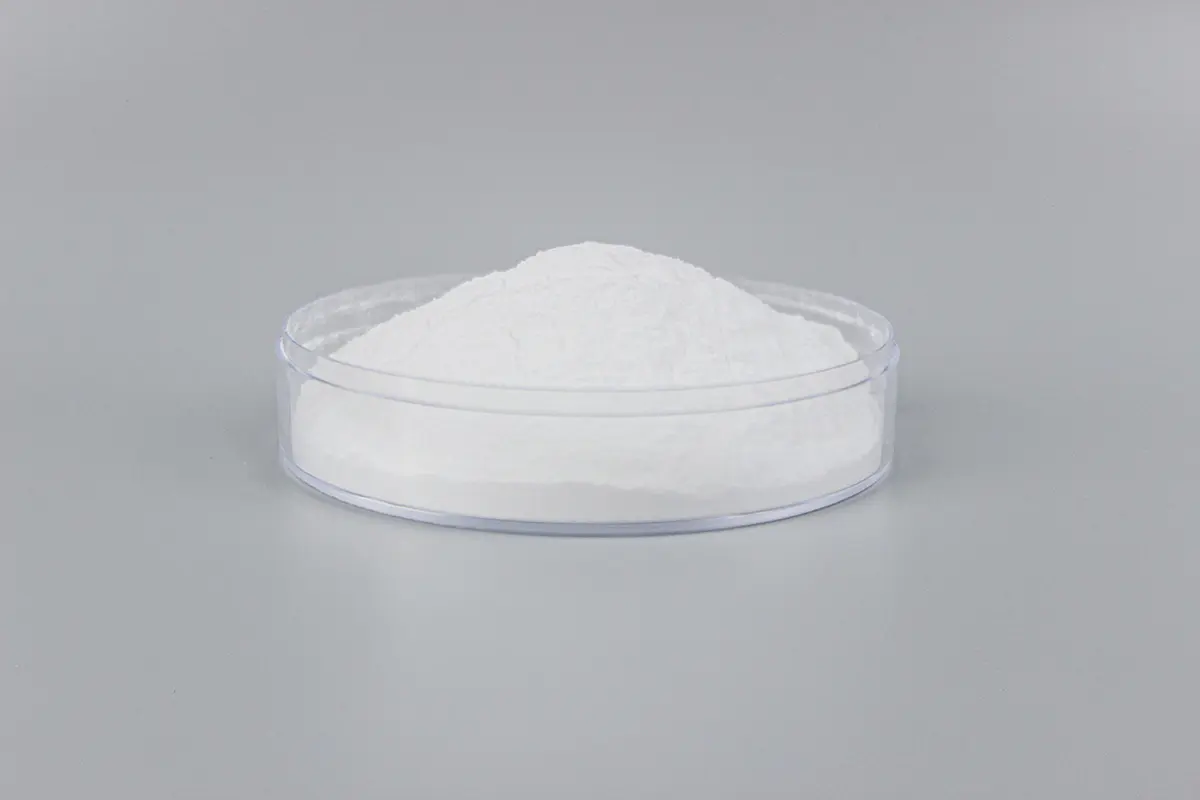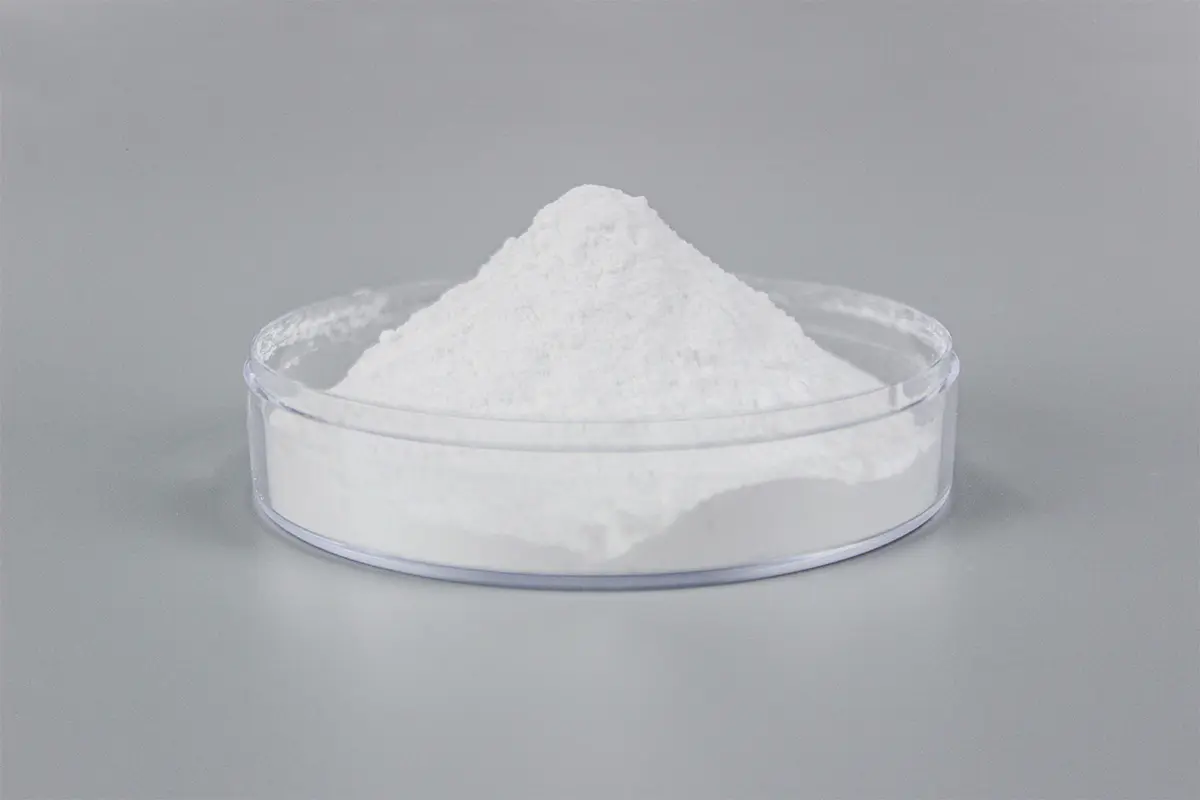Trimagnesium Phosphate, often abbreviated as TMP, is an essential inorganic compound playing significant roles across various sectors, most notably the food and pharmaceutical industries. You might be wondering what makes this specific phosphate so important, or how sourcing quality trimagnesium phosphate can impact your final product. This article dives deep into the world of Trimagnesium Phosphate, exploring its properties, diverse applications, manufacturing insights, and crucial considerations for procurement professionals like Mark Thompson looking for reliable suppliers. Whether you’re formulating a new food additive blend, developing a nutritional supplement, or seeking consistent chemical raw materials, understanding Trimagnesium Phosphate is key to success. Reading on will equip you with the knowledge to make informed decisions about this versatile compound.
What Exactly is Trimagnesium Phosphate? Unpacking the Chemical Basics
Trimagnesium Phosphate is an inorganic compound with the chemical formula Mg₃(PO₄)₂. Essentially, it’s a salt formed from magnesium ions (Mg²⁺) and phosphate ions (PO₄³⁻), derived from phosphoric acid. You might also encounter it referred to as magnesium phosphate tribasic. It typically appears as a white, odorless, crystalline powder or sometimes a fine powder. This chemical is distinct from other magnesium phosphates due to the specific ratio of magnesium to phosphate.

Image Alt: Trimagnessium Phosphate
Understanding its fundamental nature is the first step. Trimagnesium Phosphate belongs to the broader family of phosphate salts, which are widely used across many applications. Its structure allows it to provide both essential mineral nutrients: magnesium and phosphorus. As an inorganic compound, it possesses inherent stability under normal storage conditions, making it a reliable ingredient for various formulations. The specific form, whether anhydrous (without water) or hydrated, can influence its properties slightly.
This phosphate is more than just its formula; its physical form as a white crystalline powder impacts how it’s handled and incorporated into products. Unlike some highly soluble chemical compounds, trimagnesium phosphate has relatively low solubility in water but is soluble in dilute acids. This property is crucial for some of its applications, particularly in controlling acidity or acting as a slow-release nutrient source.
How is Trimagnesium Phosphate Typically Manufactured?
The manufacturing process for Trimagnesium Phosphate generally involves a controlled chemical reaction. Typically, a source of magnesium, such as magnesium oxide or magnesium hydroxide, is reacted with phosphoric acid under specific conditions (like temperature and pH). The goal is to achieve the correct stoichiometry – the precise ratio of magnesium to phosphate – to form Mg₃(PO₄)₂.
The reaction mixture is carefully monitored to ensure the desired compound precipitates out of the solution. This precipitate, which is trimagnesium phosphate, is then usually washed, filtered, dried, and sometimes milled to achieve the desired particle size, often resulting in a fine powder or granulated form. Quality control during manufacturing is paramount to ensure the purity of the final product, minimize impurities, and guarantee consistent properties batch after batch – a key concern for any procurement officer.
Variations in the manufacturing process can influence the final characteristics of the trimagnesium phosphate, such as particle size distribution, density, and hydration state. Reputable manufacturers and suppliers employ stringent process controls and quality checks. This ensures the chemical meets specific grade requirements, whether for food, pharmaceutical, or industrial use. Understanding the basics of production helps appreciate the importance of choosing a supplier committed to high standards.
What are the Key Chemical and Physical Properties of Trimagnesium Phosphate?
Trimagnesium Phosphate possesses several key properties that dictate its use. As mentioned, it’s typically a white crystalline powder, odorless, and tasteless. Its low water solubility but solubility in acids is a defining characteristic. The chemical formula Mg₃(PO₄)₂ indicates it’s a rich source of both magnesium and phosphorus.
Here’s a quick look at some key properties:
| Property | Description | Relevance |
|---|---|---|
| Appearance | White crystalline powder or fine powder | Handling, mixing, visual aspect in final products |
| Solubility | Low in water, soluble in dilute acids | Affects bioavailability, release rate, use in pH-sensitive systems |
| pH | Slightly alkaline when suspended in water | Can act as a buffer or acidity regulator |
| Chemical Stability | Generally stable under normal conditions | Good shelf life, reliable performance in formulations |
| Nutrient Content | Source of Magnesium and Phosphorus | Key function in nutritional supplement and food fortification |
| Form | Can exist as anhydrous or hydrated | May affect density and handling properties |
Trimagnesium Phosphate is relatively stable, meaning it doesn’t readily break down under typical storage or processing conditions, contributing to the stability of products it’s used in. Its ability to interact with acid is fundamental to its role as an antacid or a leavening agent component in some applications. The fact that trimagnesium phosphate is a white powder also makes it suitable for applications where color is a factor.
Why is Trimagnesium Phosphate a Staple in the Food Industry?
The food industry utilizes Trimagnesium Phosphate for several valuable functions. It’s recognized as a safe food additive (often designated E343) and contributes positively to food processing and nutrition. One of its primary roles is as an anti-caking agent. In powdered food products like salt, sugar, powdered milk, or spice blends, trimagnesium phosphate helps prevent clumping by absorbing excess moisture, ensuring the products remain free-flowing.

Image Alt: Sodium Metabisulfite – Example of a powdered chemical often requiring anti-caking agents
Beyond anti-caking, trimagnesium phosphate serves as a nutrient supplement, fortifying certain food products with essential magnesium and phosphorus. This is particularly relevant in health foods, beverage mixes, and infant formulas. It also functions as a pH regulator or buffer, helping to maintain a stable pH level in various kinds of food, which can affect texture, flavor, and shelf life. In some dairy products or processed foods, it can act as a stabilizer or emulsifier, improving texture and consistency. Think about its role alongside other food grade phosphates.
Its versatility makes trimagnesium phosphate a valuable tool for food technologists. Whether it’s ensuring powder flows smoothly, boosting the nutritional profile, or controlling acidity, this phosphate compound plays a subtle but important role in many foods we consume daily. It can sometimes be found in baked goods as part of the leavening agent system, working in conjunction with an acid source.
Are There Significant Pharmaceutical Uses for Trimagnesium Phosphate?
Yes, the pharmaceutical industry also leverages the properties of Trimagnesium Phosphate. Its most prominent role is as a nutritional supplement. Since it provides both magnesium and phosphorus, two minerals crucial for human health (especially bone health and nerve function), trimagnesium phosphate is sometimes used in multivitamin/mineral supplements. It serves as an effective source of magnesium and phosphate.

Image Alt: Magnesium Citrate – Another common magnesium supplement form
Beyond direct nutritional supplement use, trimagnesium phosphate can be found in antacid formulations. Its ability to react with stomach acid helps neutralize excess acidity, providing relief from heartburn or indigestion. In tablet manufacturing, it can also serve as an excipient – an inactive substance used as a carrier for the active ingredients. Its properties as a filler, binder, or flow agent can be beneficial in creating stable and consistent tablets or capsules.
The pharmaceutical applications highlight the non-toxic nature of trimagnesium phosphate when used appropriately. Its role as both a nutrient source and a functional excipient underscores its versatility within this highly regulated industry. Ensuring high purity and adherence to pharmaceutical grade standards is critical when sourcing trimagnesium phosphate for these applications.
Beyond Food and Pharma: What Other Industries Utilize This Phosphate?
While the food and pharmaceutical industries are major consumers, Trimagnesium Phosphate finds applications in other sectors too. In agriculture, certain specialty fertilizer formulations may include trimagnesium phosphate as a source of both magnesium and phosphate for plant growth. Magnesium is vital for chlorophyll production, and phosphate is essential for energy transfer and root development.
There are also niche industrial applications. For instance, it has been explored as a component in certain ceramics or as a grinding material in dental applications due to its hardness and biocompatibility. Its ability to act as a precipitant or coagulant under specific chemical conditions might be utilized in some water treatment or specialized chemical synthesis processes, although this is less common than its food/pharma roles.
These diverse applications, spanning from fertilizer to potentially dental materials, demonstrate that trimagnesium phosphate is a versatile compound. Each industry has specific requirements for purity, particle size, and other characteristics, emphasizing the need for suppliers who can cater to these varied demands across various industries.
How Does Trimagnesium Phosphate Function Specifically as a Food Additive?
As a food additive, Trimagnesium Phosphate primarily functions in several key ways, leveraging its physical and chemical properties:
- Anti-caking Agent: This is perhaps its most common role. Trimagnesium Phosphate particles have a high surface area and can coat the particles of the primary food powder (like salt or spices). They preferentially absorb ambient moisture, preventing the food particles from sticking together and forming clumps. This ensures the product remains free-flowing and easy to measure or dispense. It essentially acts as a drying agent at a micro-level.
- pH Regulator / Buffer: Trimagnesium Phosphate can help stabilize the pH of certain foods. In slightly acidic or alkaline conditions, it can resist significant changes in pH level, which is important for maintaining the desired texture, flavor, color, and shelf stability of the product. This pH control is vital in processed foods and beverages.
- Nutrient Fortification: It serves as an excellent source of magnesium and phosphate, allowing manufacturers to enrich foods and beverages, enhancing their nutritional value. This is particularly important where dietary intake might be low or for specialized nutrition products.
- Stabilizer / Emulsifier: In some applications, particularly involving dairy components or fats, trimagnesium phosphate can help maintain a uniform dispersion of ingredients, preventing separation and improving texture. It interacts with proteins and other components to enhance stability.
- Leavening Agent Component: While less common than sodium phosphates or calcium phosphates, it can participate in some chemical leavening systems for baked goods, reacting with an acid source to produce gas and cause dough or batter to rise.
These functions highlight how trimagnesium phosphate, often used in small quantities, significantly impacts the quality, usability, and nutritional profile of many kinds of food.
Sourcing Guide: What Should Buyers Consider When Looking for a Trimagnesium Phosphate Supplier?
For procurement professionals like Mark Thompson, sourcing Trimagnesium Phosphate effectively requires careful consideration beyond just price. Finding a reliable supplier is crucial for consistent quality and smooth operations. Key factors include:
- Quality and Consistency: Does the supplier provide quality trimagnesium phosphate with consistent particle size, purity, and properties from batch to batch? Request specifications and certificates of analysis (CoA). Consistent chemical composition is non-negotiable.
- Certifications: Does the supplier hold relevant certifications like ISO 9001 (Quality Management), FSSC 22000 or equivalent (Food Safety), Kosher, Halal? For pharmaceutical use, GMP compliance is essential. RoHS compliance might be relevant depending on the final application.
- Grade Availability: Can the supplier provide the specific grade required (e.g., food grade, pharmaceutical grade, technical grade)? Ensure the grade matches your application needs. Ask about food grade phosphates specifically if needed.
- Documentation and Traceability: Can the supplier provide comprehensive documentation, including CoAs, MSDS (Material Safety Data Sheets), and potentially traceability records? This is vital for quality control and regulatory compliance.
- Communication and Support: Is the sales and technical support team responsive, knowledgeable, and easy to communicate with? Efficient communication can prevent misunderstandings and delays, addressing a key pain point.
- Logistics and Lead Times: Can the supplier meet your delivery schedules reliably? Discuss lead times, shipping options, and packaging requirements upfront to avoid production delays.
- Supplier Reputation and Reliability: Research the supplier’s track record. Look for reviews, testimonials, or references. Attending industry exhibitions can be a good way to meet potential manufacturers and suppliers face-to-face.
Focusing on these aspects helps ensure you partner with a supplier who delivers not just a chemical, but also reliability and peace of mind. It’s about building a strong supply chain relationship.

Image Alt: Dipotassium Phosphate – Another important phosphate chemical
Safety First: Is Trimagnesium Phosphate Safe for Industrial and Consumer Use?
Trimagnesium Phosphate is generally recognized as safe (GRAS) by regulatory bodies like the U.S. Food and Drug Administration (FDA) when used in accordance with good manufacturing practices, particularly as a food additive and nutritional supplement. It is considered non-toxic in the quantities typically used in food and pharmaceutical products.
Its safety profile stems from the fact that it provides essential minerals, magnesium and phosphorus, which are vital for human health. However, like any substance, excessive intake could potentially lead to adverse effects, mainly related to an imbalance of minerals. Adherence to regulatory guidelines and recommended usage levels is important.
In industrial settings, standard safety precautions for handling fine powder chemicals should be followed (e.g., using dust masks and appropriate ventilation) to avoid inhalation. Overall, when sourced from reputable manufacturers and suppliers and used as intended, trimagnesium phosphate has a well-established safety record in its primary applications.
Trimagnesium Phosphate vs. Others: How Does It Compare to Different Phosphates and Magnesium Sources?
It’s helpful to understand how Trimagnesium Phosphate stacks up against other related compounds:
- Vs. Other Magnesium Salts (e.g., Magnesium Citrate, Magnesium Oxide):
- Solubility & Bioavailability: Magnesium Citrate is generally more soluble and often considered more bioavailable than trimagnesium phosphate. Magnesium oxide has high magnesium content but lower bioavailability.
- Additional Nutrient: Trimagnesium Phosphate provides phosphorus in addition to magnesium, unlike citrate or oxide forms.
- Functional Properties: TMP offers anti-caking and pH buffering properties not typically associated with citrate or oxide forms used primarily as supplements.
- Vs. Other Phosphates (e.g., Sodium Phosphates, Calcium Phosphates, Potassium Phosphates):
- Cation: The primary difference is the associated cation (Na⁺, Ca²⁺, K⁺ vs. Mg²⁺). This affects the mineral contribution and sometimes the functional properties.
- Applications: While all are used in the food industry, specific uses can differ. Sodium phosphates are common emulsifiers and stabilizers. Calcium phosphates are used in leavening and fortification. Potassium phosphates like dipotassium phosphate are often used in beverages and as buffers.
- Solubility & pH: Different phosphate salts exhibit varying solubilities and effects on pH. Trimagnesium phosphate has notably lower water solubility compared to many sodium or potassium phosphates.
Choosing between these compounds depends entirely on the specific application requirements, including desired functional properties (e.g., anti-caking, buffering, leavening), required nutrient contribution (magnesium, calcium, sodium, potassium, phosphate), solubility needs, and cost considerations. Trimagnesium phosphate occupies a unique niche due to its combination of magnesium and phosphate delivery, along with its specific functional roles as a food additive.
Finding a Reliable China Trimagnesium Phosphate Supplier: Tips for Success
For buyers like Mark Thompson sourcing from developing countries, finding a reliable China Trimagnesium Phosphate supplier involves navigating potential challenges like communication and quality consistency. Here are specific tips:
- Verify Credentials: Look beyond the website. Ask for business licenses, certifications (ISO, Food Safety, etc.), and proof of export experience. Reliable manufacturers and suppliers will readily provide these.
- Request Samples and CoAs: Always request a pre-shipment sample and compare its Certificate of Analysis (CoA) with the specifications you require. Test the sample if possible. Also, request CoAs from recent production batches to check for consistency.
- Audit (If Possible): For significant volumes or critical applications, consider a factory audit (either in-person or through a third-party service). This provides invaluable insight into their quality control processes and manufacturing capabilities.
- Clear Communication: Establish clear communication channels and confirm understanding of specifications, packaging, shipping terms (Incoterms), and payment methods. Address potential language barriers proactively.
- Start Small: If possible, place a smaller trial order before committing to large volumes. This allows you to evaluate the supplier’s product quality and service reliability in a real-world transaction.
- Leverage Exhibitions & Platforms: Industry exhibitions remain a good way to meet potential suppliers. Reputable online B2B platforms can also be useful, but always perform due diligence. Searching specifically for "china trimagnesium phosphate" suppliers will yield many results, so vetting is key.
- Discuss Pain Points: Be upfront about your key concerns (e.g., shipment delays, quality discrepancies). A good supplier will be willing to discuss how they mitigate these risks.
By being diligent and systematic, you can find trustworthy Chinese partners like Kands Chemical who supply high-quality trimagnesium phosphate and understand the needs of international buyers.
Key Takeaways on Trimagnesium Phosphate
To wrap up our exploration of this important phosphate compound, here are the essential points to remember:
- Definition: Trimagnesium Phosphate (Mg₃(PO₄)₂) is an inorganic chemical, typically a white powder, providing both magnesium and phosphate.
- Key Functions: It acts as an effective anti-caking agent, nutritional supplement (source of magnesium & phosphorus), pH regulator, and stabilizer in the food industry. It’s also used in pharmaceutical applications like antacids and supplements.
- Other Uses: Potential applications exist in agriculture (fertilizer) and niche industrial or dental areas.
- Properties: Characterized by low water solubility, stability, and ability to react with acids. It’s considered non-toxic and safe (GRAS) for intended uses.
- Sourcing: Choosing a reliable supplier requires focusing on quality consistency, certifications, clear communication, and logistical capabilities, especially when sourcing china trimagnesium phosphate.
- Comparison: It differs from other magnesium sources (like citrate) and phosphates (sodium phosphates, calcium phosphates, potassium phosphates) in terms of nutrient profile, solubility, and specific functional applications.
Understanding the multifaceted nature of Trimagnesium Phosphate empowers formulators, manufacturers, and procurement specialists to utilize this versatile compound effectively and source it wisely.
Post time: Apr-09-2025










